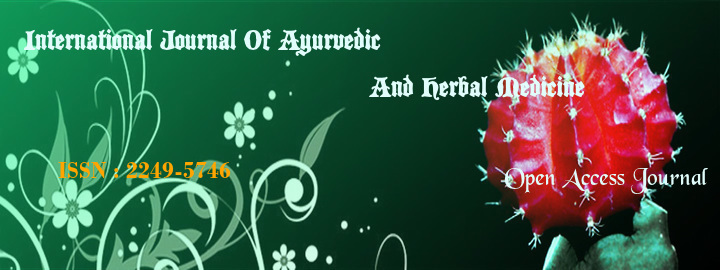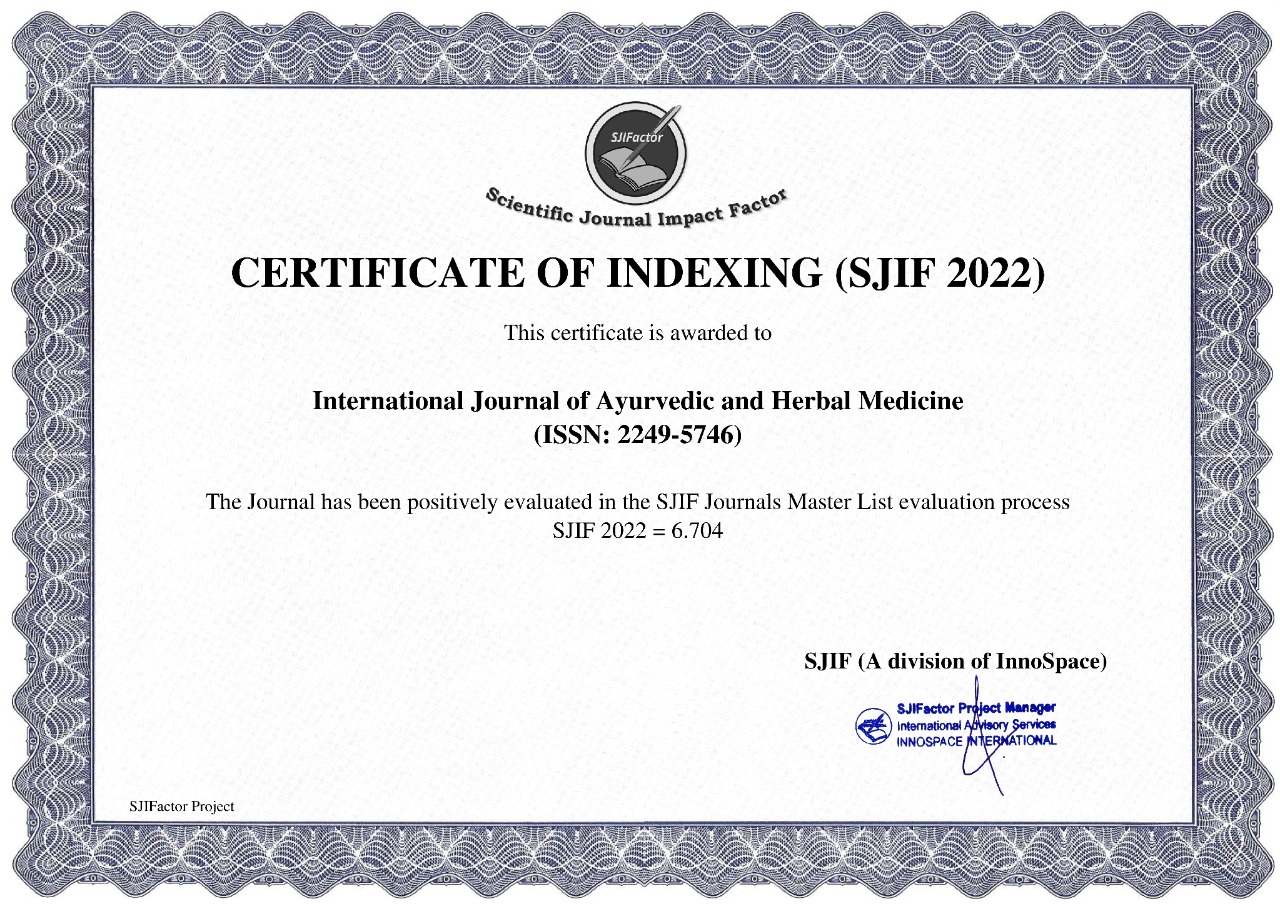


1Lecturer, Dayanand Ayurvedic College, Jalandhar Punjab, India
2Sr. Lecturer, Department of Shalya Tanra, Gandhi Govt. P G Ayurvedic College Paprola , H.P, India
3Reader, Department of Shalya Tanra , Rajiv Gandhi Govt. P G Ayurvedic College Paprola , H.P, India
*Corresponding Author: Kumari Smita
Lecturer, Dayanand Ayurvedic College, Jalandahr,
Punjab. India. 144008.
ABSTRACT:
Bhagandar is a cumbersome disease. The detailed description of the disease in the classical Ayurvedic texts is very much similar to the description of the disease in the modern medicine. The beginning is in the form of a pidika, the abscess, which, if not drained properly, converts into Bhagandar, the Fistula in ano. The treatment of bhagandar is usually prolonged, and recurrence is high. One of the reasons for challenges encountered during treatment and high rate of recurrence is the complexity of the structure of the fistula in ano and the difficulties associated with the accurate diagnosis of the condition. Various methods are in practice for the diagnosis of the condition including the classical methods like DRE, proctoscopy and fistulography; and advanced techniques like eendoanal sonography, CT scan and MRI. Despite various advancements in the diagnostic methods, the accurate diagnosis remains challenge. This study was planned to study the accuracy offered by these various diagnostic tools. From the outcome of the study it was concluded that Fistulogram is more accurate in giving information regarding the number of internal openings and the length of the fistulous tract whereas MR Imaging is more successful in revealing the types and the sub types of fistula, the extensions of fistula and the connections of the tract with the surrounding structures.
Reference:
1. Varanasi; 2006: 479.
2. Eisenhammer S. A new approach to the anorectal fistulous abscess based on the high intermuscular lesion. Surg Gynecol Obstet 1958; 106(5):595–599.
3. Brunicardi F C, Anderson D K, Billiar T R, Dunn D L, Hunter J G, Pollock R E. Schwart’sPricnipleas of Surgery. McGraw Hill medical publication division. 8th Edn; 2005: 1108.
4. Das S. Concise text book of surgery. Dr S Das. Calcutta. 3rd Edn; 2001. 1052.
5. Parks AG. Pathogenesis and treatment of fistula-in-ano. BMJ 1961; 1(5224):463–469.
6. Seow-Choen, Phillips RK. Insights gained from the management of problematical anal fistulae at St. Mark’s Hospital,1984-88. Br J Surg 1991; 78(5):539–541.
7. Beckingham IJ, Spencer JA, Ward J, Dyke GW, Adams C, Ambrose NS. Prospective evaluation of dynamic contrast enhanced magnetic resonance imaging in the evaluation of fistula in ano. Br J Surg 1996; 83(10):1396–1398.
8. Buchanan G, Halligan S, Williams A, et al. Effect of MRI on clinical outcome of recurrent fistula-in-ano. Lancet 2002; 360(9346):1661–1662.
9. Vijaya lakshmi D V , Chegireddy , Yootla M , AY Lakshmi, Settipalli S, Kadiyala S. MRI in the Diagnosis and Pre-operative Classification of Perianal and Anal Fistulas. Int J Res Med. 2017; 6(1); 64-70
10. Maier AG, Funovics MA, Kreuzer SH et al: Evaluation of perianal sepsis: Comparison of anal endosonography and magnetic resonance imaging. J Magn Reson Imaging, 2001;14:254– 60.
11. Sharma A R. Sushruta Samhita of Maharishi Sushruta, Part I. Chaukhambha Surbharti Prakashan., Varanasi; 2006: 242.
12. Parks AG, Gordon PH, Hardcastle JD. A classification of fistula-inano. Br J Surg 1976;63:1–12.
.
index























